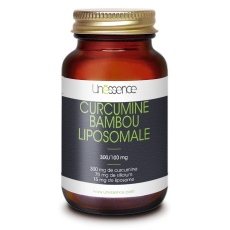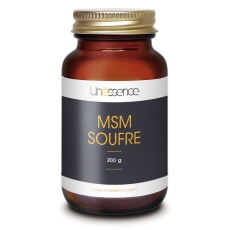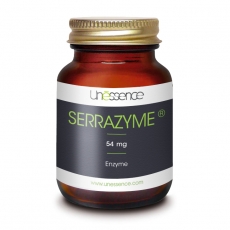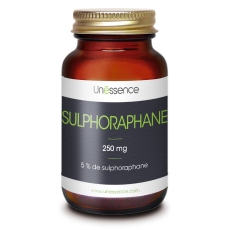No products
Product successfully added to your shopping cart
There are 0 items in your cart. There is 1 item in your cart.
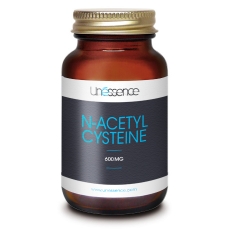 View larger
View larger
N Acetyl Cysteine
600 MG
Amino acid
Acetyl-Cysteine is a sulphur amino acid found in high concentrations in the liver, lungs and hair. It has a fundamental role in :
-
detoxification and desensitization of the body's cells
-
the regeneration of Telomeres
-
regulation of the oxidation of brain cells
-
restoring the antioxidant potential of cells
Since the mid-90s, scientific research has been mobilized in order to deepen the mechanisms of action of Acetyl-Cysteine. The average number of publications has increased considerably to reach 4000 to 4500 per year from 1996 to 2017.
This is how Acetyl Cysteine is found in organs where there is strong oxidation:
-
bronchial tubes
-
the liver
N-Acetyl Cysteine (NAC) potent intracellular detoxifier
Acetyl L-Cysteine also known as NAC increases the limiting factor for the production of a molecule that is extremely important for the detoxification and desensitization of each of our cells, Glutathione.
Glutathione is the #1 protective antioxidant located inside each of our cells. It protects the cell from the aggression generated by the excessive production of free radicals that are harmful to its functioning and survival. Acetyl Cysteine detoxifies and decomposes toxins, free radicals that foul cells and tissues.
It liquefies viscosities and promotes the elimination of mucus.
Mechanisms of action of Cysteine
Acetyl-Cysteine is used to establish disulfide bridges, based on sulfur, in order to stabilize the structure of proteins. It models the three-dimensional shape of proteins in cells and organs.
N-Acetyl Cysteine and protection of the respiratory tract
Winter episodes, the emergence of new microorganisms, environmental pollution, heavy metals favour the weakening of the organism's defences.
Acetyl l Cysteine, thanks to its assimilable sulphur, eliminates toxins and micro-organisms that accumulate and attack the body's cells.
Acetyl-Cysteine:
-
reduces the toxicity and harmfulness of pollutants, microorganisms and other harmful substances.
-
decomposes the accumulation of mucus
-
breaks down the biofilms that surround microorganisms in order to escape the vigilance of the immune system.
N-Acetyl Cysteine and Immunity Actors
Acetyl Cysteine provides antioxidant protection and regulates the hypersensitivity of cells and tissues to the entry of microorganisms and sensitizing particles. It achieves these functions through its ability to mobilize the key players in immunity and trigger a significant response from the body's natural defenses.
-
significantly reduces NFKappa B, a major actor and initiator of inflammation and cell proliferation.
-
decreases the cytokines IL-1, IL-6, TNF co-messengers of inflammation initiation and maintenance. They lead to an excessive mobilization of the body's resources and can paralyze the immune system's fine network and sufficient response.
N-Acetyl Cysteine: deep cleansing of the liver
Acetyl cysteine is a sulfur amino acid. It provides sulphur, an essential element to cleanse and considerably strengthen the liver. Sulphur literally "burns" the toxins it has to take care of.
Acetyl-Cysteine restores the functioning of liver cells and increases their oxygenation. The liver is the site of an intense activity of decomposition of toxins, toxic substances that reach it from all over the body.
Glutathione production must be sufficient to capture, take up, decompose and eliminate toxins through multiple named sequences:
-
sulphation
-
sulfo-conjugation
-
glucuronidation
-
methylation
Acetyl-Cysteine is active as a detoxifying agent against :
-
toxic molecules
-
various pollutants
-
environmental pollution
-
toxicity of heavy metals
It also improves the micro-circulation in the liver of rats.
N-Acetyl Cysteine, envies and impulses
Acetyl l Cysteine (NAC) has many functions at the cerebral level. It regulates and modulates the appetite, craving and drive for food, cigarettes and certain beverages.
Acetyl Cysteine modulates the channels
-
glutamatergics
-
NMDA
Acetyl Cysteine regulates the production, release and concentration of glutamate in synapses and its recycling. It prevents hypo or hyperfunction of glutamate release. This is important for memorization, for the persistence of actions and the realization of repetitive and stereotyped movements. Glutamate can also have excitatory activity as it can increase intracellular calcium levels.
Acetyl Cysteine and sports events
A scientific study was conducted with cyclists who were given NAC before and during a 45-minute endurance test:
-
1st take at 71% of their VO 2 max then
-
2nd take at 92% of their VO 2 max show significant improvements.
The results show a :
-
26.3% increase in the time to exhaustion
-
a 92% increase in VO 2 max.
(Dr. Donald Kelley)
Acetyl Cysteine and loss of lean body mass
The metabolism of cysteine, its level, the flow, the variations are determining in the balance of the lean mass (muscle) during episodes of great fragility.
The balance between lean cell mass and fat mass is regulated by Cysteine.
The increase in Cysteine produces an increase in the Sulfate/Glutamine/Urea ratio and the Glutamine/Glutamate ratio.
Sulfate and Glutamine are constituents of muscle tissue. The loss of lean mass is largely triggered by cytokines such as Interleukin-6. This will draw from the muscle tissue nutrients that are essential to the immune system to fight against infectious agents or anarchic cells.
The most important redox agents that act as "buffers" are :
-
Glutathione, albumin...
-
NAC vitalizes and prevents albumin depletion
-
Division of Biochemistry and Molecular Biology. University of Alicante. 2018
| Supplements facts | Supplement Facts :Serving Size : 3 capsules : N Acétyl Cystéine 1800 mg, Vitamine B6 3,75 mg (262,5% daily value),rice powder 180 mg, Vegetal capsule (HPMC) |
| Nutritionnal analysis | |
| Suggested use | 1 gélule 3 fois par jour à avaler avec de l’eau. |
| Quantity | 60 capsules |
| Weight | 41,48 g |

